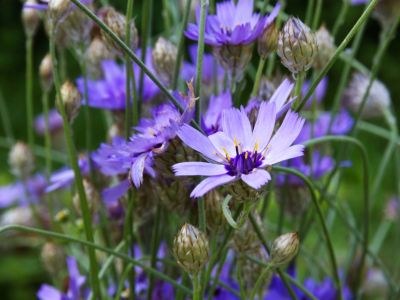About Cupid’s Dart Flowers
Catananche caerulea, or cupid’s dart, is a flowering perennial native to Europe. It forms clumps up to 30 inches (76 cm.) tall with thin, wiry stems and blue or lavender, daisy-like flowers. The leaves are narrow, grass-like, and grayish-green. The flowers start blooming in midsummer and continue into the fall. There are a few cultivars with different bloom colors; ‘alba’ has white flowers and ‘major’ has the usual lavender blooms but with dark purple centers. The bracts of spent flowers and the seed heads of cupid’s dart are attractive as well. Use them freshly cut and as dried flowers in arrangements. Leave some of the seed heads in place to get more flowers next year. The individual plants, though perennial, don’t last very long.
How to Grow Cupid’s Dart
Growing cupid’s dart is simple and hands-off under the right conditions. This plant does best in USDA zones 4 through 7. The hot climates of the south and southwest are too harsh in the summer. Cupid’s dart care begins with ideal conditions; full sun, well-drained soil, and soil that is loose and even a little sandy are recommended. It will not do well in soil that is too wet or heavy and clay-based. The best way to propagate cupid’s dart is by seed. If you give it all the right conditions, you should not have to do much to maintain cupid’s dart. It is deer-proof and has no serious pest or disease problems. Powdery mildew may be an issue but is not common. Cut flowers back once spent to encourage more blooms but leave some in place for re-seeding.
